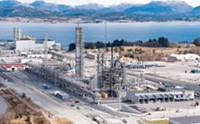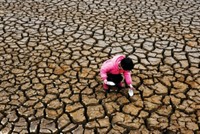Advertisement
Grab your lab coat. Let's get started
Welcome!
Welcome!
Create an account below to get 6 C&EN articles per month, receive newsletters and more - all free.
It seems this is your first time logging in online. Please enter the following information to continue.
As an ACS member you automatically get access to this site. All we need is few more details to create your reading experience.
Not you? Sign in with a different account.
Not you? Sign in with a different account.
ERROR 1
ERROR 1
ERROR 2
ERROR 2
ERROR 2
ERROR 2
ERROR 2
Password and Confirm password must match.
If you have an ACS member number, please enter it here so we can link this account to your membership. (optional)
ERROR 2
ACS values your privacy. By submitting your information, you are gaining access to C&EN and subscribing to our weekly newsletter. We use the information you provide to make your reading experience better, and we will never sell your data to third party members.
Environment
Laying Out The Attainable
Climate Change: Major technology changes could still restrain global warming, UN report says
by Cheryl Hogue
April 18, 2014
| A version of this story appeared in
Volume 92, Issue 16

Holding human-caused global warming to an internationally agreed-on level is still possible, but it will require large-scale technological shifts, says a United Nations report released on April 13. That level, set at a climate summit held in Copenhagen four years ago, is an average global temperature increase of 2 °C above preindustrial levels by 2100.
“Only major institutional and technological change will give a better than even chance that global warming will not exceed this threshold,” according to the report from the Intergovernmental Panel on Climate Change (IPCC). That’s because without additional action to reduce greenhouse gas emissions, emissions are expected to continue rising, driven by growth in global population and economic activities, according to the report.
“The urgency is clear. Global emissions have to peak by the end of this decade,” says Jennifer Morgan, who was a review editor for the report’s chapter on international cooperation and is the climate and energy program director at World Resources Institute, a think tank.
Greenhouse gas releases from human activities between 1970 and 2010 represent about half of the cumulative emissions since the Industrial Revolution began about 1750, the report says. CO2 from fossil-fuel burning and industrial processes accounted for about 78% of the total increases in greenhouse gas emissions since 1970, it adds.
The report examines geoengineering technologies proposed to remove CO2 from the air or reflect solar radiation. “Whether or not they could actually contribute to the avoidance of future climate change impacts is not clear,” IPCC concludes.
Efforts to reduce the amount of solar radiation entering the atmosphere “cannot substitute for emission reductions in the long term,” the report says. These technologies would not address the buildup of greenhouse gases in the atmosphere or effects such as acidification from CO2 uptake by oceans.
The report, which focuses on mitigation of climate change, is the last in a series that IPCC has issued in the past seven months. The other two reports examined the science of climate change and adaptation to it. They are expected to influence global negotiations on a new climate treaty.




Join the conversation
Contact the reporter
Submit a Letter to the Editor for publication
Engage with us on Twitter